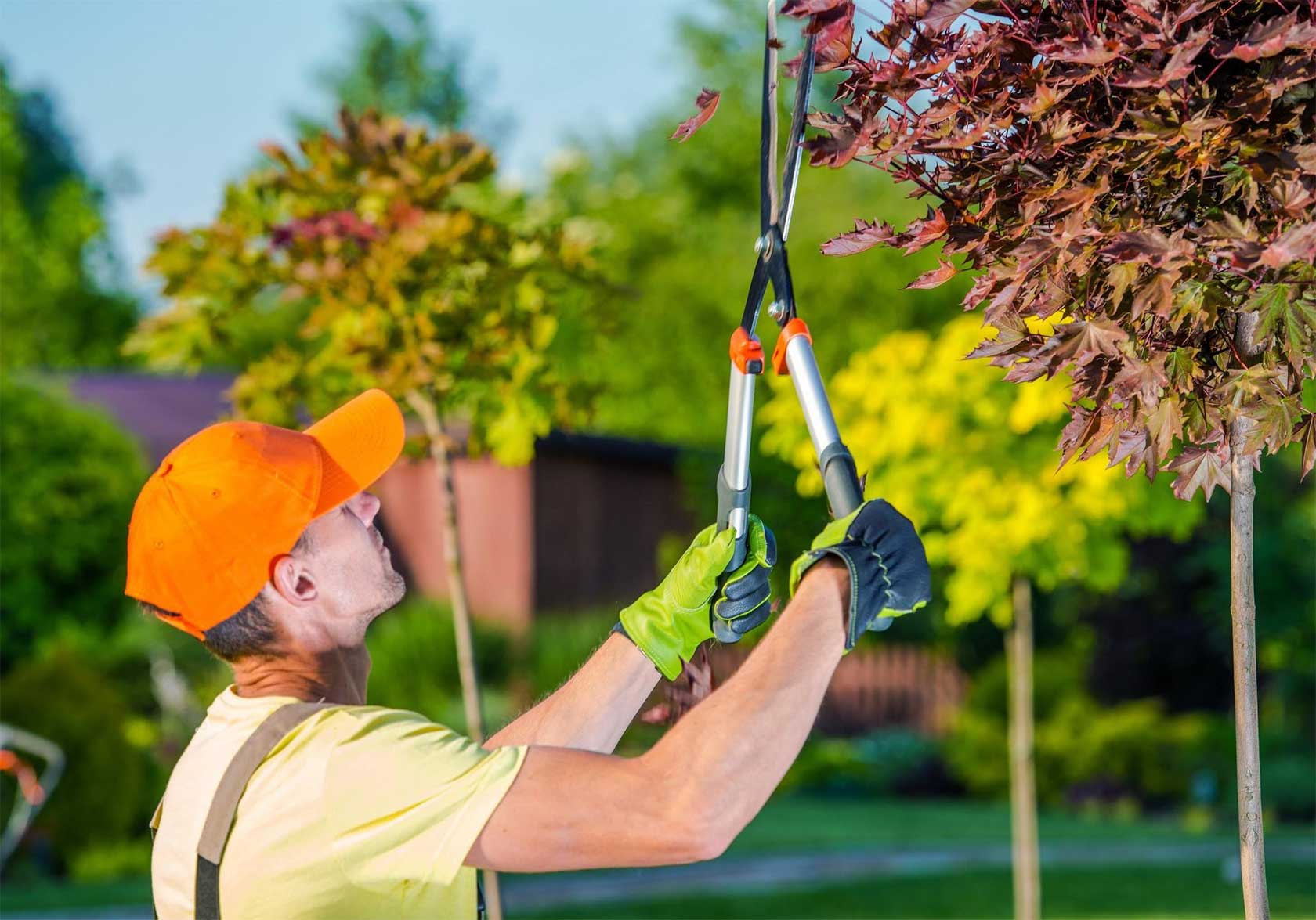
Without trees, none of us would be here. That’s something we learned in the fifth grade while trying not to get caught passing notes or sneaking another piece of candy. They provide oxygen to the environment after using a bit of energy from the sun to produce glucose. Remember the word for that process? It’s called photosynthesis, and some experts think that one large tree can provide four people with enough oxygen to breathe for one day. Trees also help clean the air by storing carbon dioxide in their fibers.
Care for trees is a deep concern for many of us. Arborists, environmentalists, animal rights activists, and others like them make a special effort to spread the word about the importance of trees. A number of beautiful specimens may indeed be growing on your property right now. If so, you too might be a crusader for the cause. Caring for your trees is tantamount to caring for the world.
So what happens if you notice that one of them, or a few of them, haven’t been looking well of late? You’ll certainly recognize a sick tree when you see one. It may not be producing as many leaves as it used to. Perhaps its bark has gone soft. Weak limbs have begun to bend, threatening to snap off at the trunk. Why is your tree dying, and what can be done to save it? We spoke with West Jordan Tree Service to get a better understanding of what’s going on.
What’s Making It Sick?
Most trees live for a hundred years or more. In Scotland, the Fortingall Yew is estimated to be at least a thousand years old. For all, we know William Wallace ate his lunch under it every day. But some unlucky specimens can find themselves at the mercy of things like fungus, insects and yes, the most inevitable of them all, old age.
.tdi_67_f1d.td-a-rec{text-align:center}.tdi_67_f1d .td-element-style{z-index:-1}.tdi_67_f1d.td-a-rec-img{text-align:left}.tdi_67_f1d.td-a-rec-img img{margin:0 auto 0 0}@media (max-width:767px){.tdi_67_f1d.td-a-rec-img{text-align:center}}
There are a lot of variables to consider here. What kind of tree is it? How old? Is the climate fully conducive to its well-being? A smaller tree may only live for twenty years, while the mighty oaks and pines will go for centuries. If your tree is dying from old age, there is very little that can be done. But if what you have is an infestation, there are a few steps that can turn things around.
Treatment For Tree Fungus
If you suspect your tree is suffering from a fungal infection, the first thing to do is identify what kind of fungus you’re dealing with. There are four categories to consider:
- Vascular Wilt
- Foliar Or Shoot
- Root And Butt Rot
- Canker
Vascular fungus inhibits nutrients from reaching the tree. Early wilting and loss of foliage are symptoms to watch for. Foliar/shoot fungus is the most common, spotting out the leaves and robbing them of their beauty. Root and butt rot will kill the tree’s roots (the worst part about this particular strain is that your tree will show no symptoms until it’s too late to do anything). Canker fungus sprouts from the untreated stubs of a pruned tree.
Once you’ve targeted the fungus, prune your tree with correct pruning tools. Cutaway damaged or dead branches, but leave sucker branches alone until autumn. This last will prevent new suckers from growing in the spring. When finished, clean your tools with soap and water. Dip them in fungicide to ensure the problem doesn’t spread to other trees. Now treat the tree with a fungicide. Make sure you have the type that’s specific to that tree’s issue. All through the growing season, keep your tree pruned and watered. Following these steps will greatly reduce a tree’s vulnerability to different kinds of fungus.
Treatment For Insects
First of all, don’t forget that every tree is home to insects. Not all of them are bad. Ladybugs, dragonflies, and lacewings will defend your tree by eating harmful insects. Encourage help from these friendly beasties by cultivating your garden with local plants and flowers that attract bees and beetles. Avoid using pesticides for your tree, as these will also chase away the bugs which are there to help.
Keeping the tree healthy will also reduce the risk of invasion. A strong fortress is much more difficult to sack than a weak one. If you’re looking to kill harmful insects while leaving the good ones alone, try an oil-based spray. So long as you’re careful about which spray to use (some are more aggressive than others, none should ever be used on blooming trees), this tactic will likely end to many parasites.
These tips have proven effective time and again for the recuperation of trees in distress. If you notice a specimen under attack, don’t let it die; instead, nurse it back to health, so it can keep you healthy for years to come. Next time you need help, give a tree doctor a call.

